Sunsetting Legacy Systems to Build Your Business Back Better, Without the Risks
When it comes to IT, there’s a day and an age for everything. Remember when we thought it would never get better than dial-up internet? How about when we got hard drives with one gig of storage space? Or when we created a DVD player that could go in the car?
In their times, those advances were the best that was available. But things changed, and those advances then became obsolete. The same is often true of IT systems. Businesses are obligated to get rid of older systems as they become outdated.
What Does Sunsetting Legacy Systems Mean?
Sunsetting a legacy system is phasing out an old system and implementing a new one. This must be performed systematically, which requires mapping out what is to be done and remaining aware of every step of the process.
1. Is it Necessary?
If the current system can no longer be upgraded or repaired, that’s a clear sign that an upgrade is needed. Industry requirements can also change at any time, and remaining compliant is crucial. Security, for the team as well as the clients, is also a consideration.
2. Make a Plan
Consider the security and integrity of all information currently stored on the system. This involves conducting a full audit of all the data to be retained, backing up everything before initiating the transfer process, and ensuring that everything is secure and uncorrupted, during and after the transfer. Creating a plan for how to do this will minimize stress.
3. Keeping it Secure
For those sunsetting legacy systems, it’s essential to stay cognization of the legacy systems themselves. Know that any information remaining on an old framework will still be secure. Zero trust and edge security are excellent ways to protect systems. Also, be sure that only essential information is being transferred. Transferring unnecessary or incomplete data is not recommended, as it can give rise to security issues or other unforeseen problems.
4. Is it Going as Expected?
Throughout the entire process, ensure that things are progressing properly. For example, is the new system working as expected? Are problems being encountered or suggested during the transition process? If even minor errors are noticed, the transfer should be rolled back. The only way to know is to ensure proper monitoring at each step.
5. Train Everyone
Ensure that the entire team knows how to operate and interact with the new system. Some procedures will necessarily be modified, so schedule training sessions to familiarize the team with every change.
Tips and Guidelines
Remember the below recommendations when contemplating sunsetting legacy systems.
- Always have a backup. Without fail, backup all data before initiating a transfer. Without a backup, a serious risk of data loss will be incurred during the sunsetting process.
- Transfer one component at a time. This is another way to minimize the potential for loss. Transferring only one element of the old system at a time to the new system makes complete data loss nearly impossible.
- Monitor security. Keep an eye on all security features while sunsetting legacy systems. Then, track the latest security features and options for the new system, keeping it consistently up to date.
Final Considerations
- Is it necessary? Do these changes really need to be made? Is there a way to mitigate the amount of change required? Changing information or processes as slowly as possible makes things easier for the team, and can cut attendant costs.
- What are the benefits of sunsetting my legacy system, as well as using the new system under consideration? Will this transition ease operations for the business? For the clients? Will the new system be less or more expensive to run? More or less secure?
Sunsetting legacy systems are important. Ensure that it’s done correctly.
